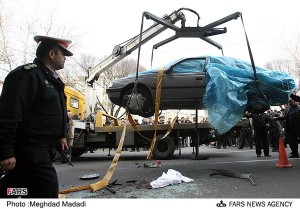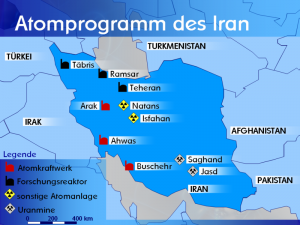Iran, P5+1 “Succeeded in Making History”
It has been a very long road since the announcement in November of 2013 that a preliminary agreement between Iran and the P5+1 group of nations had been made on Iran’s nuclear technology. There have been extensions along the way and times when a permanent deal appeared imminent along with times when no such deal seemed possible. Despite tremendous pressure from Israel and the neocon lobby who lust after a war with Iran, the outlines for a permanent deal are now in place. What remains is to nail down the details by the June 30 deadline when the extensions of the interim agreement expire. Laura Rozen and Barbara Slavin capture the historic significance of what has been achieved:
We have “found solutions,” Iran Foreign Minister Mohammad Javad Zarif first proclaimed on Twitter on April 2, “Ready to start drafting immediately.”
We have “succeeded in making history,” Zarif said at a press conference here April 2. “If we succeed, it is one of the few cases where an issue of significance is solved through diplomatic means.”
We have “reached a historic understanding with Iran, which, if fully implemented, will prevent it from obtaining a nuclear weapon,” US President Barack Obama said from the White House rose garden after the deal was announced April 2.
What stands out about the agreement is just how much Iran was forced to give up on issues that had been seen by most observers as non-negotiable. Jonathan Landay interviewed a number of nuclear experts on the agreement:
On its face, the framework announced Thursday for an agreement that limits Iran’s nuclear program goes further toward preventing Tehran from developing a nuclear weapon than many experts expected it would, including requiring an international inspection system of unprecedented intrusiveness.
The Agreement
The version of the agreement as released by the US can be read here. Let’s take a look by sections.
The first section addresses the general concept of uranium enrichment. Although hardliners in the US want all enrichment in Iran stopped, it was clear that Iran would never have agreed to stop. But what has been achieved is staggering. Iran will take two thirds of its existing centrifuges offline. Those centrifuges will be placed in a facility under IAEA inspection, so there is no concern about them winding up in an undisclosed facility. Further, only Iran’s original IR-1 centrifuge type will be allowed. That is a huge concession by Iran (everybody knows the IR-1’s suck), as they had been developing advanced centrifuges that are much more efficient at enrichment. Many critics of a deal with Iran had suspected that advanced centrifuges would be a route that Iran would use to game any agreement to increase their enrichment capacity if only the number and not the type of centrifuge had been restricted. Further, Iran will not enrich uranium above 3.67% for a period of 15 years. And the stockpile of 3.67% uranium will be reduced by 97%, from 10,000 kg to 300 kg. This reduction also will apply for 15 years. This section also carries an outright statement of targeting a breakout time of 12 months to produce enough enriched uranium for a bomb. [But as always, it must be pointed out that merely having enough enriched uranium for a bomb does not make it a bomb. Many steps, some of which there is no evidence Iran has or could develop under intense international scrutiny, would remain for making a bomb.]
The next section of the agreement is titled “Fordo Conversion”. Iran’s Fordo site is the underground bunker built for uranium enrichment. Iran has agreed not to enrich uranium at Fordo or to have uranium or any other fissile material present for 15 years. While many have advocated a complete shutdown of Fordo, the agreement provides a very elegant alternative. Fordo will now become a research site under IAEA monitoring. Had the site shut down, where would all of the scientists who work there now have gone? By keeping them on-site and under IAEA observation, it strikes me that there is much less concern about those with enrichment expertise slinking into the shadows to build a new undeclared enrichment facility.
The section on the Natanz facility follows Read more →


